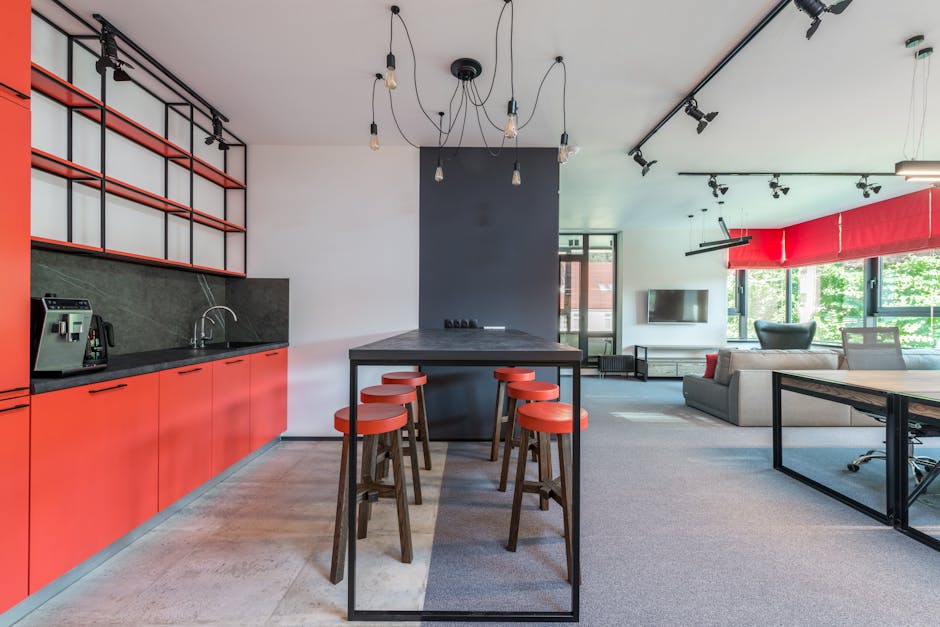The Evolution of Workplace Branding: A Case Study of Robin's Rebranding
“This article examines the significance of rebranding in the workplace management industry, using Robin's recent brand refresh as a case study. We explore how visual identity, mission alignment, and adapting to hybrid work trends can influence a company's market position and customer perception. ”

The Power of Rebranding in Workplace Management
In today's rapidly evolving business landscape, companies must adapt not only their services but also their brand identity to remain relevant and competitive. This is particularly true in the workplace management sector, where the shift towards hybrid work policies has accelerated the need for innovative solutions. A recent rebranding effort by a prominent workplace experience platform serves as an excellent case study to explore this phenomenon.

A Fresh Look for a New Era
The company in question unveiled a new brand identity in 2023, marking a significant milestone in its evolution. This rebranding effort was not merely cosmetic; it represented a strategic shift to align with the changing dynamics of the modern workplace. The new visual identity, including a redesigned logo and color palette, was carefully crafted to reflect the company's commitment to fostering connection and collaboration in hybrid work environments.
The Logo: A Symbol of Unity
The new logo mark is a visual representation of coming together, reminiscent of a table. This design choice is intentional, symbolizing the company's mission to create workplaces where everyone has a seat at the table. It speaks directly to workplace leaders looking to reimagine how work gets done, emphasizing the importance of inclusivity and collaboration.
A Bold Color Choice
In a departure from their previous red branding, the company opted for a bold magenta as their primary color. This choice was made to stand out in the industry and inspire confidence and optimism. Interestingly, this color selection coincided with Pantone's 2023 Color of the Year, showcasing the company's forward-thinking approach to design.
Aligning Visual Identity with Core Values
The rebranding effort extended beyond just logo and color changes. The company introduced a new visual motif across their site, inspired by the Nordic concept of a "red thread" – a core idea that connects all elements. In this case, the magenta thread symbolizes the company's purpose and mission, tying together all aspects of their visual identity.

Photography that Reflects Purpose
The company's new brand identity also includes a thoughtful approach to photography, focusing on three core themes:
- Hybrid Community
- Beautiful Workspaces
- The Whole Human
These themes emphasize the role of community in thriving workplaces and acknowledge the importance of work-life balance in the modern era. This approach aligns perfectly with the growing trend of prioritizing employee experience in workplace management.
The Impact of Rebranding on Workplace Management Solutions
Rebranding in the workplace management industry is not just about aesthetics; it's about positioning a company to better serve the evolving needs of businesses navigating the complexities of hybrid work. A refreshed brand identity can:
- Signal adaptability to changing work trends
- Attract forward-thinking clients
- Inspire confidence in the company's ability to innovate
For workplace managers and IT professionals considering various solutions, a company's brand evolution can be indicative of their commitment to staying ahead of industry trends and meeting modern workplace challenges.

Lessons for Workplace Managers
This rebranding case study offers valuable insights for professionals in workplace management:
-
Embrace Change: The willingness to evolve your brand signals adaptability – a crucial trait in today's fast-paced business environment.
-
Align with Purpose: Ensure that your visual identity reflects your company's core values and mission.
-
Consider the Human Element: In workplace management, it's essential to remember that behind every desk booking and room reservation are people seeking connection and productivity.
-
Stay Ahead of Trends: Keep an eye on emerging workplace trends and be prepared to adapt your solutions – and potentially your brand – accordingly.
Conclusion: The Future of Workplace Branding
As the nature of work continues to evolve, so too must the companies that provide workplace management solutions. This case study demonstrates how a thoughtful rebranding effort can position a company at the forefront of the industry, ready to tackle the challenges of modern work environments.
For workplace managers, IT professionals, and facility managers, the key takeaway is clear: the tools and platforms you choose should not only meet your current needs but also demonstrate a commitment to evolving alongside the workplace of the future. As you evaluate different solutions, consider how a company's brand identity reflects its understanding of and commitment to addressing the complexities of hybrid work.
By staying attuned to these shifts in the industry and choosing partners that demonstrate forward-thinking approaches, you can ensure that your workplace remains productive, engaging, and ready for whatever the future of work may bring.